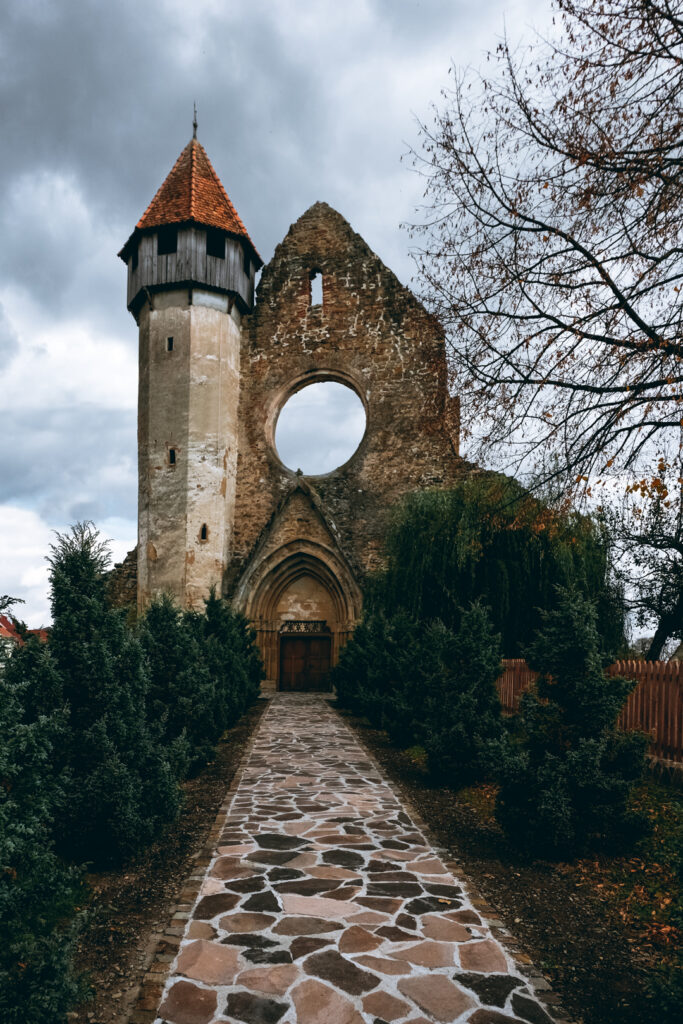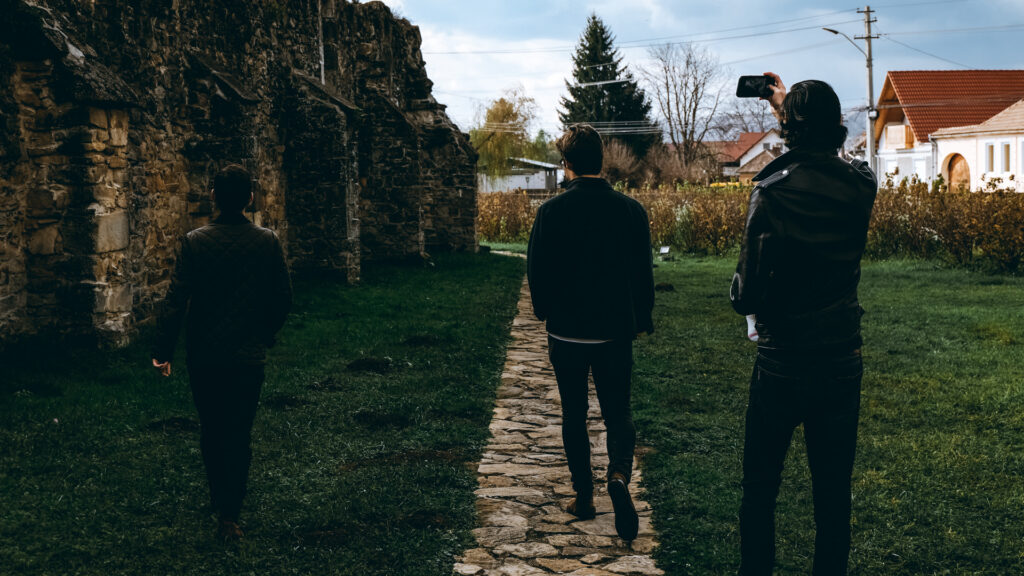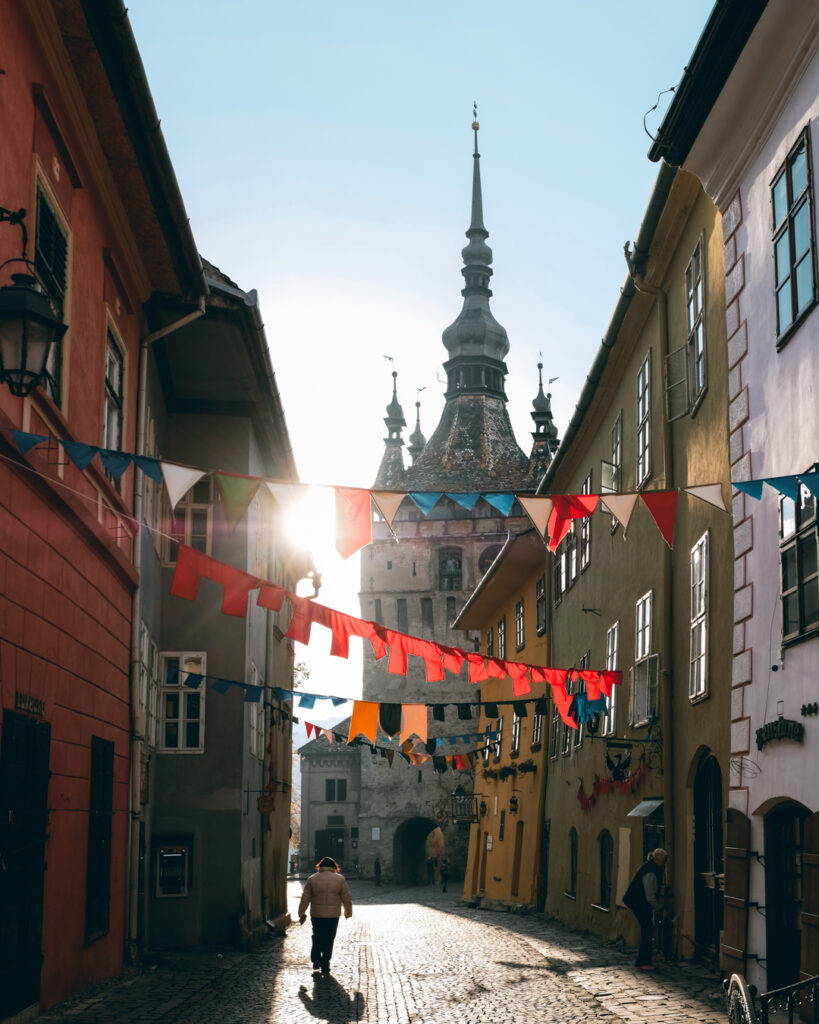In 1897 an Irishman released a book that would define a place he’d never been to. Sure, he’d read about it. Sure, he’d heard traveler’s stories about it. But he’d never been there.
Admittedly, that makes Bram Stoker’s gothic masterpiece ‘Dracula’ all the more impressive.

His eerily accurate depiction of Romania paints the country as a haunting landscape, full of castles, crags and nocturnal beasts.
On our five day trip traversing Transylvania, we’d follow the steps of Vlad Dracul III—the barbaric 15th century leader who acted as Stoker’s inspiration for Dracula. However, we’d learn that the famous vampire’s legacy was more exaggerated than first expected.
We left Cluj-Napoca—the bohemian Transylvanian capital—and headed towards our first stop on the checklist. Trundling through the meandering roads of desolate and misty rural Transylvania transported us through the Carpathian mountains into a bleaker medieval time.

Our first stop at Hunedoara reminded us that times remained bleak for many Romanians. Neighbourhoods of crumbling roads and tacky gang-financed “gypsy palaces” cluttered the town, but in Hunedoara’s center proudly stood the legendary Corvin Castle. The shadow gray behemoth married Dark Age intimidation and royal grandeur, with a surrounding moat and bridge as its child. John Hunyadi, Voivode (or ruler) of Transylvania, developed and occupied the castle in the mid 1400s. Rumour has it Vlad Dracul spent seven years here, and thus inspired Stoker’s imagined castle. Guides pushed this connection, though there was no proof Dracula had ever resided there or that Stoker had even heard of Corvin. It was the first unlikely vampire connection thrust upon a location that didn’t need Dracula connections to be extraordinary.
However such falsehoods fail to besiege the authentic history of Sighisoara, Vlad Dracul III’s birthplace. The town is one of the world’s only remaining inhabited fortified cities and a World Heritage Site. Inside nine needle-like towers punctuate a charming partnership of colourful houses and tumbling cobblestone streets. Atop the hill a fading fortress and Saxon cemetery wrestle with the consequences of time and tangles of ivy. Even without Vlad’s haunting legacy, the place would be worth a visit. But in Sighisoara’s centre lay a sun yellow three-storey house. It’s inscription reminds us that Vlad Dracul, the prince of Romanian’s land, dwelt there between 1431 and 1435. It was the first authentic claim we’d seen, and sadly the only one.
In a country peppered with endless secrets it was hard to avoid distraction, but with time pressure we headed to Brasov, a city encircled by the southern Carpathians. From there we’d drive to the sleepy town of Bran. Seven centuries before, a gruesome Hansel and Gretel trail of skewered corpses through the valley would have marked the way; Vlad the Impaler’s trail of helpless villagers punished for petty crimes unworthy of detention. But what awaited us was not a gingerbread house.

Instead stood the colossal Bran Castle. It was the Saturday night before Halloween, and Bran’s annual party was ready to commence. Hundreds of partygoers, including our poorly-dressed group, mazed through the dimly lit castle before being greeted with fresh cups of blood—red wine, of course—in the cramped courtyard. This and the clumsy dancing that followed joyfully juxtaposed the suffering Vlad had inflicted upon the place.
But the next morning’s hungover epiphany confirmed our suspicions. Bran was like many places Vlad was said to have been; he almost certainly hadn’t. In fact, the ‘Dracula Castle’ we’d toured the night before was named so in the Communist 1970s to promote tourism.
The same goes for the secluded Snagov Monastery, Dracul’s supposed resting place. It’s intricate frescoed walls and ornate decoration are worth a visit — and as I discovered, worth missing a flight for — but rumour and horse bones are the only proof that Snagov is his true resting place.

These perpetuated vampire-based rumours about Romania’s most remarkable sites have worked as a juicy marketing scheme, and will continue to do so. But associating astonishing sites like Bran and Corvin with tenuous vampiric rumour shrouds the true beauty and history of such places. Romania boasts far more than just garlic haters and over-pronounced canines. The bustling streets of jumbled Bucharest, sci-fi salt mines, roads of fortified churches, the eyes of cultural Sibiu, pre-Roman ruins and ornate palaces are just a taste of what the Eastern European country offers.
If it’s the trance of Dracula that pulls you into Romania’s grasp, it’s the multitude of captivating quirks, compelling histories and mesmerising landscapes that make you want to stay.










